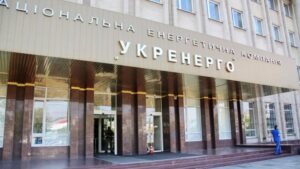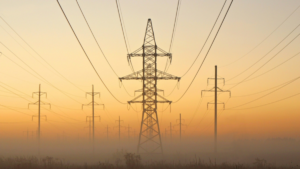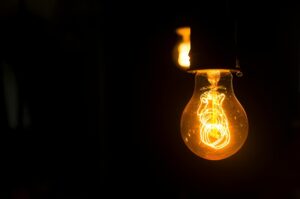
Former Danish Foreign Minister Eppe Kofod has been elected chairman of the Supervisory Board of NPC Ukrenergo, the company reports.
“An independent representative Eppe Kofod became the Chairman of the Supervisory Board, and the state representative Anatoliy Hulei became his deputy,” Ukrenergo said in its Telegram channel.
It is noted that at its first meeting after the appointment on December 12, the SB also created committees on audit, appointment and determination of remuneration, investment and strategy and decided on their heads.
Ukrenergo’s Supervisory Board consists of seven members: four independent members elected through a competitive selection process and three state representatives. The independent members of the SB were approved by the Cabinet of Ministers’ Resolution No. 1168-r of November 26, 2024: Patrick Greichen, who served as State Secretary of the German Ministry of Economic Affairs and Climate Protection in 2021-2023, Luigi de Francischi, former CEO of TERNA and Enel (already a member of the NPC’s SB), Eppe Kofod, former Minister of Foreign Affairs of Denmark, and Jan Montell, who has experience as a top manager and board member of a number of Finnish energy companies.
The representatives of the state were approved by the Government Decree No. 1232-r of December 10, 2024. The appointees are: Yuriy Boyko, who headed the Ministry of Energy of Ukraine in 2020-2021, is currently an advisor to the Prime Minister and a member of the previous Supervisory Board of NPC; Oleksiy Nikitin, who previously worked, among other things, at SE NPC Ukrenergo as Head of the Electricity Market Development Department, and then at Ukrhydroenergo as Director of the Commercial Department; Anatoliy Guley – built his career in the banking sector, was Chairman of the Board of Oschadbank and Activ Bank, as well as Deputy Chairman of the Board of Alfa Bank, and is a shareholder of Accordbank.

The Supervisory Board of NPC Ukrenergo has suspended the powers of Andrii Nemyrovskyi, a member of the company’s Management Board, by agreement of the parties. According to the company’s website, the decision was made on November 18, 2024. He has been working in this position since the summer of this year, and was also a member of the board of NPC in 2021.
Nemyrovskyi joined Ukrenergo in 2017. He worked at the NPC as Director of Market Development and Customer Service, Director of Market Development and IT, and was responsible for the creation of IT infrastructure, development and operation of the new market model, operational and technical management of the IPS of Ukraine and integration into ENTSO-E.
As reported, at the same meeting on November 18, 2024, NPC Ukrenergo appointed Vitalii Zaichenko, Chief Dispatcher of NPC and Director for Management of the Integrated Power System of Ukraine, to the Board.
The Management Board of Ukrenergo also includes Oleksii Brekht (Acting Chairman), Serhii Halahan (IT) and Oleh Skrypnyk (Finance).

Starting November 9, NPC Ukrenergo will temporarily suspend payments on its debt obligations under green sustainability bonds, the company said.
“This technical solution will be in effect until the planned debt restructuring is completed in the coming months. “Ukrenergo, together with the government of Ukraine, is taking all necessary measures to reach an agreement with bondholders in the near future,” the company said on Facebook on Wednesday.
Earlier, the Experts Club information and analytical center released a video about the defaults of countries and businesses – https://youtu.be/gq7twYrWuqE?si=4cgn_L9RC0Nm0xl5

NPC Ukrenergo currently sees no reason to introduce schedules for limiting electricity consumption for households, the company said on Telegram.
“The drop in air temperature at the beginning of next week will indeed predictably lead to an increase in energy consumption. But whether this will require the use of blackouts (in particular, for household consumers) can only be predicted by NPC Ukrenergo, which has not yet provided any forecasts on the application of restrictive measures,” the company said in a statement on Friday.
It is emphasized that Ukrenergo, together with the Ministry of Energy, regional military administrations and energy companies, is doing everything possible to ensure that there is no need to apply blackouts now.
As reported, Volodymyr Velychko, an independent member of Centrenergo’s supervisory board, said in a comment to Interfax-Ukraine that hourly power outage schedules could start as early as next week with a significant drop in temperature.
In response, Centrenergo called the assumption of possible power outages the personal opinion of a member of its supervisory board.
Schedules of power supply restrictions for households are introduced after other measures to balance the power system, such as internal reserves, imports, emergency assistance, and schedules of restrictions for industry, have been exhausted.

The Ministry of Energy of Ukraine announced a competitive selection of candidates for three positions of independent members of the supervisory board of Ukrenergo and instructed Ukrenergo to engage a professional consultant on personnel selection.
“The government remains fully committed to ensuring the independence, integrity and compliance with the highest professional standards of the new supervisory board. The selection of all members of the board – four independent and three representatives of the state – is to be completed by December 9,” the ministry said on Friday evening.
As reported, EU Ambassador to Ukraine Katarína Mathernová, regional heads of the European Bank for Reconstruction and Development (EBRD) and the International Finance Corporation (IFC), and the business ombudsman in early September called for stopping the dismissal of the company’s head Volodymyr Kudrytsky until the election of the seventh member of the board.
However, Kudrytsky was dismissed, after which the independent members of the Ukrenergo supervisory board, former ENTSO-E Presidents Daniel Dobbeni and Peder Andreasen, called the dismissal politically motivated and decided to leave the supervisory board early.
In addition, the G7 ambassadors emphasized the importance of quickly organizing a selection procedure according to the standards of the Organization for Economic Cooperation and Development (OECD) for “competent and professional independent experts” to the Ukrenergo supervisory board.

NEC Ukrenergo plans on Monday, September 2, to apply electricity restrictions for all regions in 1-2 queues throughout the day, NEC Ukrenergo said in Telegram.
In particular, from 00:00 to 16:00 there will be one queue of disconnections, from 16:00 to 24:00 – two.